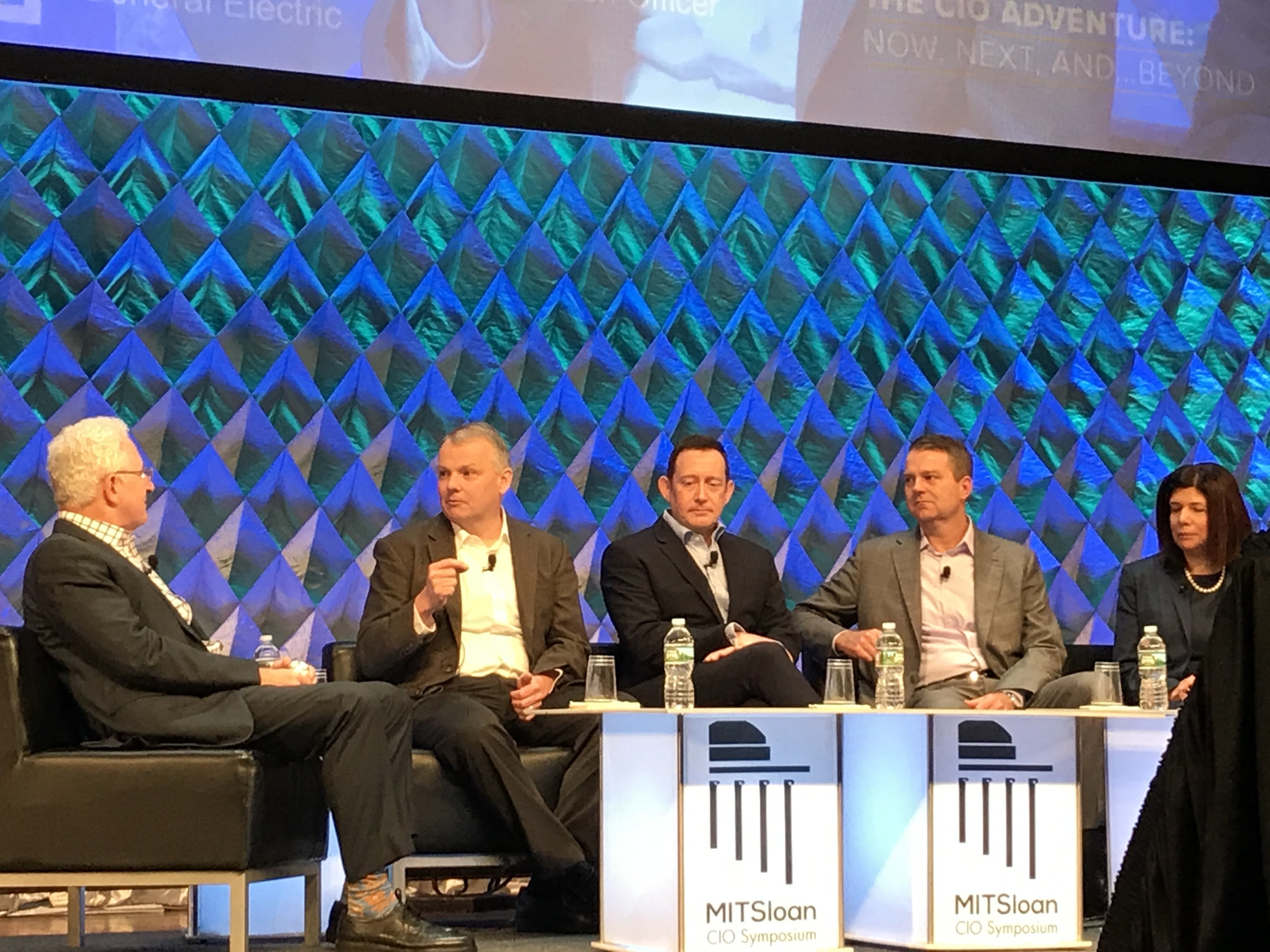MIT CIO Symposium 2017 elucidates the digital playbook
The importance of culture
Setting targets and the instrumentation of business processes — and machines — also factor heavily into GE’s digital transformation, said CIO Jim Fowler, who is leading an effort to deliver $1 billion in productivity for the company. The company measures how many digital orders from customers come into GE, and it measures how much productivity is gained from the digitization (software and analytics) of machines and business processes, Fowler said. He believes that we will soon see workplaces where technology determines the business process — a departure from the traditional view that business processes are enabled by technology.

But Fowler said that perhaps the most critical factor in achieving digital capability is the commitment from company leadership. At GE, it is Jeff Immelt, who sets the course and tracks the company’s progress, reviewing digital efficiency and revenue targets each month and also heading up GE’s committee on cybersecurity, a big issue as the company sets its sights on shifting from machine manufacturer to software titan.
At Salesforce.com, said CIO Ross Meyercord, the ability to move quickly and at scale has helped make the company an $8 billion business, but continued success depends on continuous improvement. Teams have “to listen and learn,” he said, and not be so wedded to “the existing roadmap that they can’t interject … new ways to enhance a solution.” Digitized operations produce data that gives insight into what needs to be changed. To support that virtuous cycle of “learn, iterate and go” the company has a policy of “radical transparency,” Meyercord said. Grassroots innovation and shadow IT — or “citizen development,” as he prefers to call it — is pretty much self-governing. (Bad ideas get shot down by the crowd.)
Lucille Mayer, head of client experience delivery and global innovation at BNY Mellon, said the bank is using its new NEXEN digital platform to effect internal efficiencies and create digital business services that cross product lines. The CEOs of each of the product lines have digital objectives to meet each year. “You need to bring technology and the business closer together. That is the holy grail,” she said. And it takes “education on both sides,” she added, but begins with a big change in perspective by the business.
“Technology really is the business. Technology is not waiting to be told what to do,” she said. “Technology is an actual partner at the table helping to bring the proper techniques to actually transform the business model to become more digital — and that’s really what’s going to survive going forward.”
That’s a big culture change for most companies, not just a 333-year-old bank.
